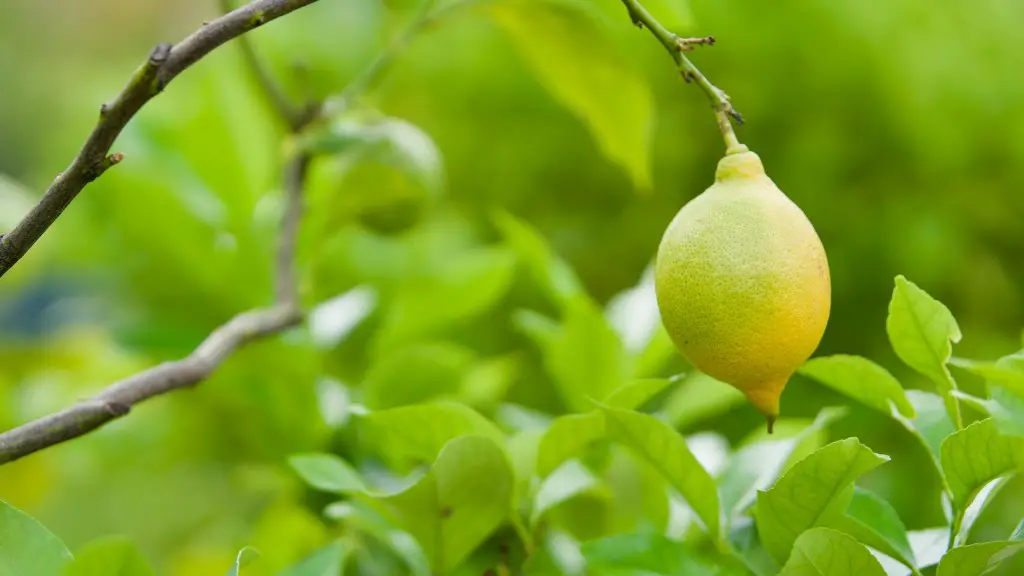Avocados are a sought-after and often expensive commodity because of their creamy and delicious taste and their multitude of health benefits. Avocados are not only delicious and nutritious, but they are also easy to grow at home. Unfortunately, many novice gardeners find themselves asking, “Why are my avocado tree leaves dropping?”
The most common reason why avocado tree leaves are dropping is due to over-watering or under-watering. When the avocado tree isn’t given enough water, its leaves will start to droop and eventually fall off. On the other hand, too much water can cause the leaves to rot, resulting in yellow spots and eventually leaf drop. Therefore, it is important to make sure to water your avocado tree consistently and to not over- or under-water it.
The other most common cause of avocado tree leaf drop is a disease such as anthracnose or root rot. Both of these diseases can cause yellowing and wilting of the leaves, leading to a decreased rate of photosynthesis and thus leaf drop. Identification of the diseases is key to treating them, and good management practices such as proper pruning, pest and disease monitoring, irrigation, and fertilization can help to prevent them from occurring in the first place. It is also important to make sure that your tree is not getting too much or too little sunlight as this can also lead to leaf drop.
In addition to diseases and improper watering, nutrient deficiencies can also cause avocado leaves to drop. A common nutrient deficiency that can affect avocado trees is magnesium deficiency. Magnesium helps to provide energy to the plant, and a lack of this nutrient can cause the leaves to dry up and eventually drop off. Other nutrient deficiencies, such as iron, zinc, and nitrogen, can also cause avocado leaves to drop. To avoid nutrient deficiencies, it is important to make sure to fertilize the avocado tree regularly.
Finally, other environmental factors such as extreme temperatures and wind can cause avocado leaves to drop. Avocado trees prefer temperatures between 55 and 85 degrees Fahrenheit. If the temperature dips below 50 degrees for an extended period of time, the leaves may start to droop and eventually fall off. Similarly, strong winds can cause the leaves to dry out and eventually drop off as well. It is important to make sure that the location of your avocado tree is protected from both cold temperatures and strong winds to help reduce the likelihood of leaf drop.
Cold Temperatures
Cold temperatures can be especially problematic for avocado trees that are just starting to establish. It is important to provide your new tree with some protection against cold temperatures by providing it with some extra insulation around the base of the tree. Additionally, you can create structure in your yard that will act as a windbreaker, such as a small shed or fence. This will help to reduce the chill from the wind, helping to keep your avocado tree warm and healthy.
In addition to creating a windbreaker, it is important to make sure that your avocado tree is getting enough sunlight during the day. Avocado trees require about six hours of direct sunlight each day, and this will help to keep them warm in the cold temperatures and help to prevent the leaves from dropping.
Finally, it is important to make sure that your avocado tree is well hydrated. During the winter months, the tree will require more water than usual, especially if it is exposed to cold temperatures and wind. Make sure to water your tree regularly to ensure that its leaves remain healthy and strong.
Fertilizers
The right type of fertilizer can be incredibly beneficial to your avocado tree. This is because the fertilizer helps to provide the tree with the essential nutrients that it needs in order to thrive, such as magnesium, iron, zinc, and nitrogen. Additionally, organic fertilizers, such as compost or manure, can also help to increase the organic matter in the soil, allowing important microorganisms to flourish and further help to fertilize the tree.
It is important to make sure that you are using the right type of fertilizer for your avocado tree. If you are unsure which type of fertilizer is best, then you can consult with a local gardening expert for advice. In addition, it is important to make sure that you are following the fertilizer application instructions carefully in order to get the best results and to avoid damaging your tree.
Finally, it is important to make sure that you are fertilizing your avocado tree on a regular basis. Different types of fertilizers have different application rates, so make sure to read the instructions carefully. Proper fertilization will ensure that your avocado tree remains healthy and strong, and it will help to prevent any nutrient deficiencies that may cause the leaves to drop.
Pruning
Pruning your avocado tree on a regular basis is an important part of keeping your tree healthy and strong, as it helps to encourage new growth and to remove any dead, diseased, or damaged branches. Additionally, pruning can help to reduce the stress on the tree by removing any branches or leaves that may be competing for nutrients or light.
The best time to prune your avocado tree is in the late spring or early summer when the tree is actively growing. However, it is important to make sure that you are pruning the tree accurately, as improper pruning can cause further damage to the tree. It is recommended that you consult with a local gardening expert for advice on proper pruning techniques.
It is also important to make sure that you are not pruning too much of the tree at once, as this can also cause damage to the tree. Prune only 10-15% of your tree’s growth in any one pruning session, and make sure that you are removing any dead or damaged branches as soon as possible.
Regular pruning is an important part of taking care of any avocado tree, and it can help to encourage new growth and to prevent the leaves from dropping due to stress. It is important to make sure that you are pruning your tree correctly and not drastically removing any of its growth.
Pest and Disease Monitoring
Regularly monitoring for pests and diseases is another important part of avocado tree care. Common pests that attack avocado trees include aphids and mealybugs, and common diseases include anthracnose, root rot, and mosaic virus. Monitoring for these pests and diseases will help you to take action as soon as they appear, which can help you to prevent further damage to your tree.
In order to properly monitor for pests and diseases, it is important to do regular inspections of the tree. Start at the top of the tree and look for any signs of damage, such as wilting or yellowing leaves, or for abnormal growth. As you move down the tree, check for any signs of pests or diseases, such as sticky webs or yellow spots. Pay close attention to the roots of the tree as well, as root rot can be particularly damaging.
If you notice any signs of pests or diseases, it is important to take action immediately. Many of these pests and diseases can be treated with organic solutions, such as neem oil or insecticidal soap. Additionally, it is important to make sure that your avocado tree is properly fertilized, as a lack of nutrients can make your tree more susceptible to pests and diseases.
Monitoring for pests and diseases is an important part of taking care of any avocado tree, and it is important to take action as soon as you notice any signs of pests or diseases. Additionally, making sure that your tree is properly fertilized and pruned can help to prevent damage from pests and diseases.


